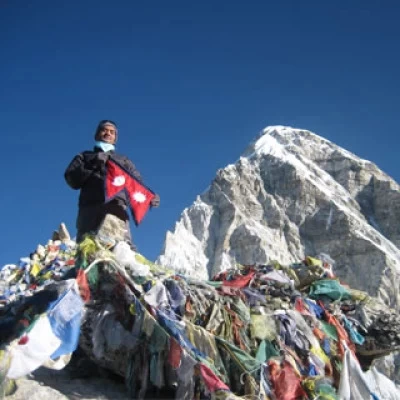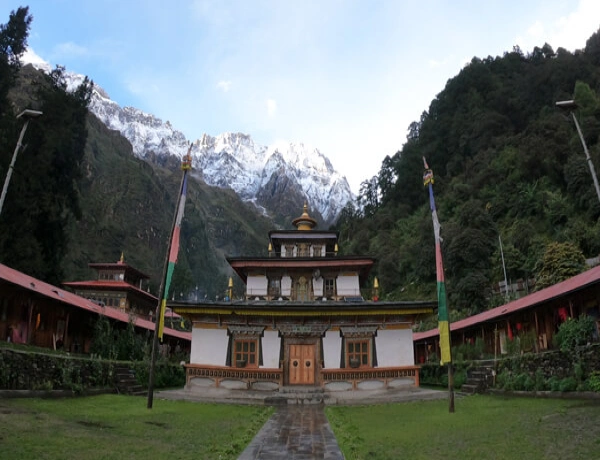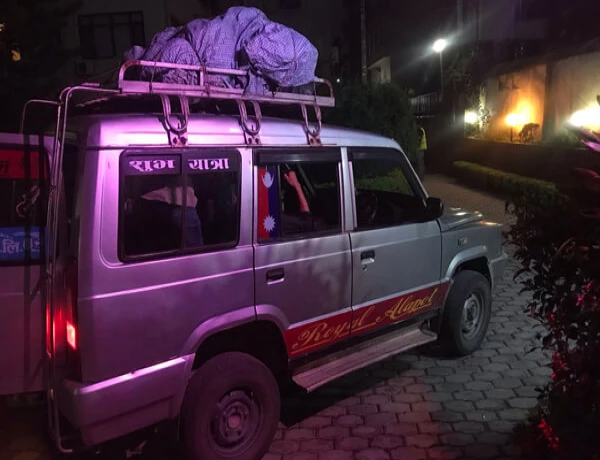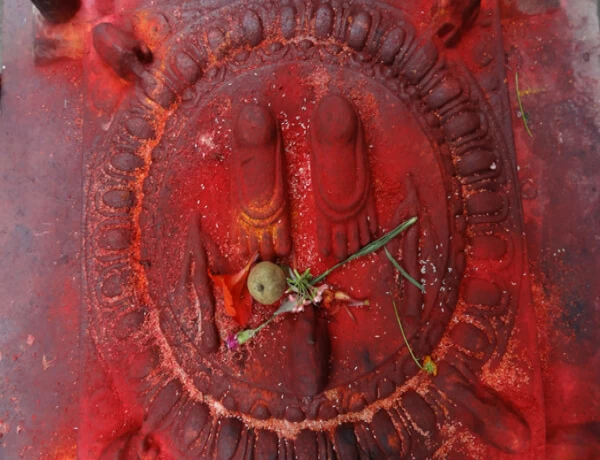Parsa Wildlife Reserve
Parsa Wildlife Reserve is located in the south-central lowland Terai of Nepal. The 499 km2 of the pristine sub-tropical jungle makes Parsa Nepal's largest wildlife reserve. Once this area served as a vacation site for the Rana Rulers of the country. In 1984, it was gazetted as a wildlife reserve to preserve the habitat for wild Asian elephants, and a variety of other fauna- It is contiguous with Chitwan National Park in the west.
Features Parsa Wildlife Reserve
The soil is primarily composed of gravel and conglomerates, making it susceptible to erosion. The hills present a very rugged face with numerous gullies and dry streambeds. As the foothills are very porous, water flows underground and surfaces at a distance of about 15 km. from the base of the hill. The Churia hill range from 750m to 950m running east to west.
The climate of Parsa Wildlife Reserve
Winter (October-December) provides pleasant temperatures with clear skies. Nighttime temperatures can drop to 0°C. During spring (January-March) temperatures rise and water becomes scarce. During summer (April-June) the days become hot and humid with temperatures rising up to -40°C. Monsoon (July-September) brings cooling rains.
Flora and Fauna of Parsa Wildlife Reserve
The forests are mainly composed of tropical and subtropical species. Sal forests compose about 90 percent of the reserve's vegetation. Along the banks of the rivers, riverine forests are found containing species like Khair and Silk cotton trees. In the northeastern part of the reserve, at higher altitudes, Sal and Pine forests are occurring. On the southern slope of the Siwalik hills, the forests are dominated by pine. Sabai grass is a commercially important species and grows well on the southern face of the Churia hills.
The reserve supports good populations of various endangered species including the wild Asian elephant, Royal Bengal tiger, Sloth bear, and Leopard. Blue bull, Sambar, Chital, Hog deer, Barding deer, Langur, Rhesus macaques, striped hyenas, Jungle cats, and Palm civets are also found in the reserve.
The reserve also provides habitat for more than 500 species of birds. For example, White-breasted Kingfisher, Paradise flycatcher, large racquet-tailed drongo, Golden-backed woodpecker, etc are some of the common sights. Giant hornbill, one of the endangered bird species is found in some forest patches. The reserve is also famous for reptiles and different kinds of snakes including the common Cobra, Common and banded karate, Python, and King cobra.
Facilities of Parsa Wildlife Reserve
There is a small guesthouse with four rooms at the headquarters. There is also a teahouse that can provide tea, snacks, and Nepali food. Hetauda and Birgunj are about an hour's bus. Make sure to bring a first-aid kit containing medicines for intestinal problems.
Near the headquarters, there is a machan (view tower) that provides excellent opportunities to catch glimpses of many birds, deer, and leopards. Wild elephants could be also sighted from the machans. Kailas Bhata is atop a hill and is of religious importance. It houses two small temples (Dugdeswor Mahadev) paying homage to the Hindu gods of Shiva and Parvati. Also, one can look over the lush forests of the Terai from here. An elephant camp is located near the Amlekhgunj in the Bara district. Jungle rides can be arranged from the reserve headquarters, which is the best way to get a close view of the wildlife.
How to get there?
Parsa Wildlife Reserve is easily accessible. The Kathmandu - Hetauda - Birgunj highway passes by the entrance gate. The bus can be taken from Kathmandu. It takes six to seven hours to get there. A flight to Simara takes about 20 minutes. There is a 15-minute bus, ride to the reserve headquarter.
Shuklaphanta Wildlife Reserve
Shuklaphanta Wildlife Reserve was managed as a hunting reserve beginning in 1969 and was gazetted as a Wildlife Reserve in 1976, covering an area of 305 sq. km. It lies in the extreme southwestern section of Nepal’s Terai in Kanchanpur District. The reserve shares a common boundary with the Indian state of Uttar Pradesh in the south and west which is formed by the Mahakali (Sarda), River, and a major tributary of the Ganges. It is bordered on the eastern side by the Chaudhary River and to the north by a forest belt and cultivation. A total of 24 mammal species was recorded by Schaff (1978b), a total of 350 species of birds of which 180 are breeding species (Inskipp, 1989), Bhatt and Shrestha (1977) provide an annotated list of 14 species of fish, Schaaf (1978b) recorded 10 species of ectoparasites and biting flies.
Although the area of the Shuklaphanta Wildlife Reserve is small, it supports a wide range of biodiversity which is nationally and globally important. The vegetation types primarily include sal forest, and sal savanna, which is part of a continuum between climax forest and grassland that is maintained by fire and floods. The reserve supports the largest population of Bengal florican Houbaropsis Bengalensis (E) and swamp deer Cervus Duvauceli (E).
Climate at Shuklaphanta Wildlife Reserve
The area has a tropical monsoon climate with four different seasons: winter, spring, summer, and monsoon. The months of December and January are fairly cold and misty with occasional frost. The mean monthly minimum temperature varies from 10 to 12 o C in winter, gradually rising to 17oc in the spring and 26oC in the summer. Over 90% of the annual precipitation fall during monsoon between June and September. Mean maximum temperatures are 40-42°C in summer (April-May) when hot westerly winds of up to 160km per 4 hours have been recorded. (Balson, 1976).In February and March, the maximum temperature rises up to 22o to 25ocC.The relative humidity remains fairly high throughout the year except in the dry months of the pre-monsoon period.
How to get there?
The reserve is accessible by road as well as by air. The reserve will be easily accessible by road from any part of Nepal with the completion of the far-western sector of the East-West Highway. There is once a week flight from Kathmandu to Dhangadhi which is 51 km far from the park headquarters. There is a regular public bus service from Dhangadhi to Mahendranagar taking 3 hour's drive and the reserve headquarters is 8 km south-west of Mahendranagar. The Shuklaphanta Wildlife Reserve can be reached by East-west Highway through Nepalgunj-Dhangadhi-Mahendranagar.
Vegetation at Shuklaphanta Wildlife Reserve
Some 54.7% of the reserve is covered by mixed deciduous forest, grassland, and marsh in the southwest where soils are of recent alluvium. The rest is a moist deciduous forest and savanna, supported by the better-drained soils on higher terrain in the northeast (Balson, 1976).
The main vegetation types distinguished by Schaaf (1978a, 1978b) are sal Shorea robusta forest; sal savanna, which is part of a continuum between climax forest and grassland that is maintained by fire or floods; mixed deciduous forest, which is patchily distributed among the more extensive grasslands in the south-west (sal is absent); grasslands, which may be dry (locally known as phantasm) or wet in the case of areas inundated during the monsoon; lowland savanna, which occurs on the fringes of all main grasslands and covers most of Karaiya Phanta; khair-sissoo forest, dominated by Acacia catechu and Dalbergia sissoo and forming an early succession in riverine areas; and marsh, in which tall dense grasses are predominant (e.g. Phragmites Karka, Saccharum Spontaneum, and Sclerostachya fusca).
Koshi Tappu Wildlife Reserve
Koshi Tappu Wildlife Reserve lies on the floodplains of the Sapta Koshi River in the south-eastern Terai. The reserve was gazetted in 1976 to preserve habitat for the only remaining population of Wild buffalo, Arna (Bubalus are). The 176 sq. km. reserve is Nepal's smallest wildlife reserve. The eastern and western embankments of the Sapta Koshi River define the area. In 1987, Koshi Tappu was declared a Ramsar site, a wetland of international significance. The government of Nepal declared the buffer zone ( 173.5 sq. km ) surrounding the reserve in 2004.
Features of Koshi Tappu Wildlife Reserve
The Sapta Koshi is one of the three main tributaries of the Ganges- Rapid and intense flooding of the reserve, occurs during the rainy season. Embankments have been constructed parallel to the river to control the flooding.
The climate at Koshi Tappu Wildlife Reserve
The Koshi Tappu Wildlife Reserve experiences three distinct seasons. Summer (February through May) is intensely hot with minimum precipitation. Shade temperatures can reach 40 c. The monsoon starts in late May/early June and lasts until September bringing heavy frequent rainfalls. The rainfall is greatest during July but high humidity and temperatures are experienced throughout the season. Winter (October through January) is characterized by clear skies and moderate temperatures, but can still get quite cold.
Flora and Fauna at Koshi Tappu Wildlife Reserve
The vegetation is mainly composed of tall grasslands. Local villagers are permitted to collect thatch grass once a year. These are used for roof thatching and building house walls. There are also small patches of Khair-sissoo scrub forest and deciduous mixed riverine forest. The reserve has important habitat for a variety of wildlife.
The last surviving population of Wild buffalo is found here. The estimated population of wild buffalo is around 159 individuals is dwindling. They are distinguished from domestic buffalo by their much bigger horns. The reserve is also home to around 20 other animal species such as Hog deer, Wild boar, Spotted deer, Blue bull, and Rock Python.
Around 441 species of birds-many seen now here else in Nepal (14 endemic species)- have been recorded, including 20 duck species, 2 Ibis species, white-tailed stonechat, Striated marsh warbler, 30 shore birds, 114 water birds, and the endangered swamp partridge and Bengal florican. The Koshi Barrage is an extremely important resting place for many migratory birds, containing 87 winter and trans-Himalayan migratory species.
The Koshi River is home to 80 species of fish. The endangered Gharial crocodile and Gangetic dolphin have been recorded in the river as well. During winter, many of the migratory birds can be seen on the Koshi Barrage and on the river channel. Migration usually peaks around mid-March. Much wildlife visits these areas during dusk and dawn. The clear skies allow for beautiful sights of several Himalayan peaks including Makalu (8463m), the world's fifth-highest peak. Visitors can arrange an elephant ride from Reserve Headquarters
How to get there Koshi Tappu?
Daily bus (Day and Night) service is available from Kathmandu to Kakarbhitta and Biratnagar. Visitors should get off the bus at Jamuha, 4 km from Laukhi, and walk 2.5 km to the Reserve Headquarters. The road to Kusaha is marked by a signboard on the main Highway. There are also daily flights to Biratnagar, visitors flying to Biratnagar will have to take a bus and should stop at Jamuha. The Reserve Headquarters is located in the Kusaha Sunsari district.
There are a few lodges and a teashop near the Reserve Headquarters. Visitors are advised to carry a first-aid kit including medicines for intestinal problems. There is a phone at the Headquarters.




